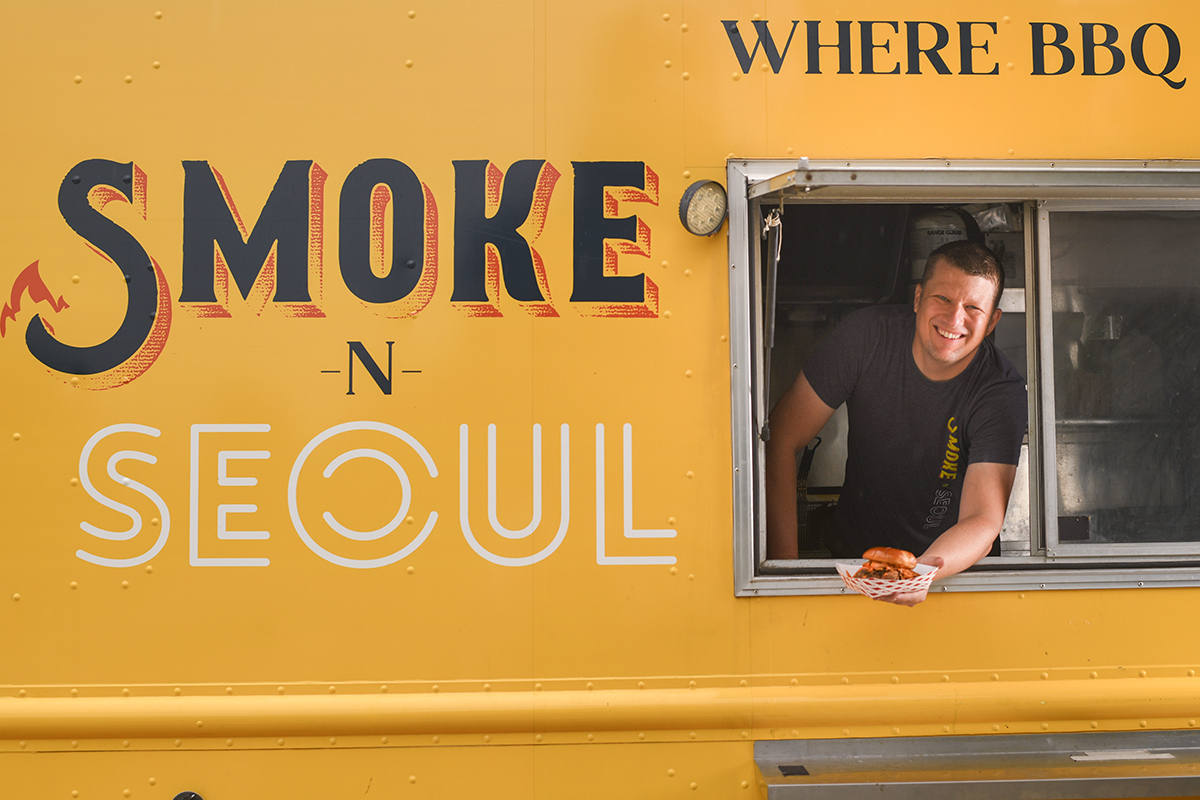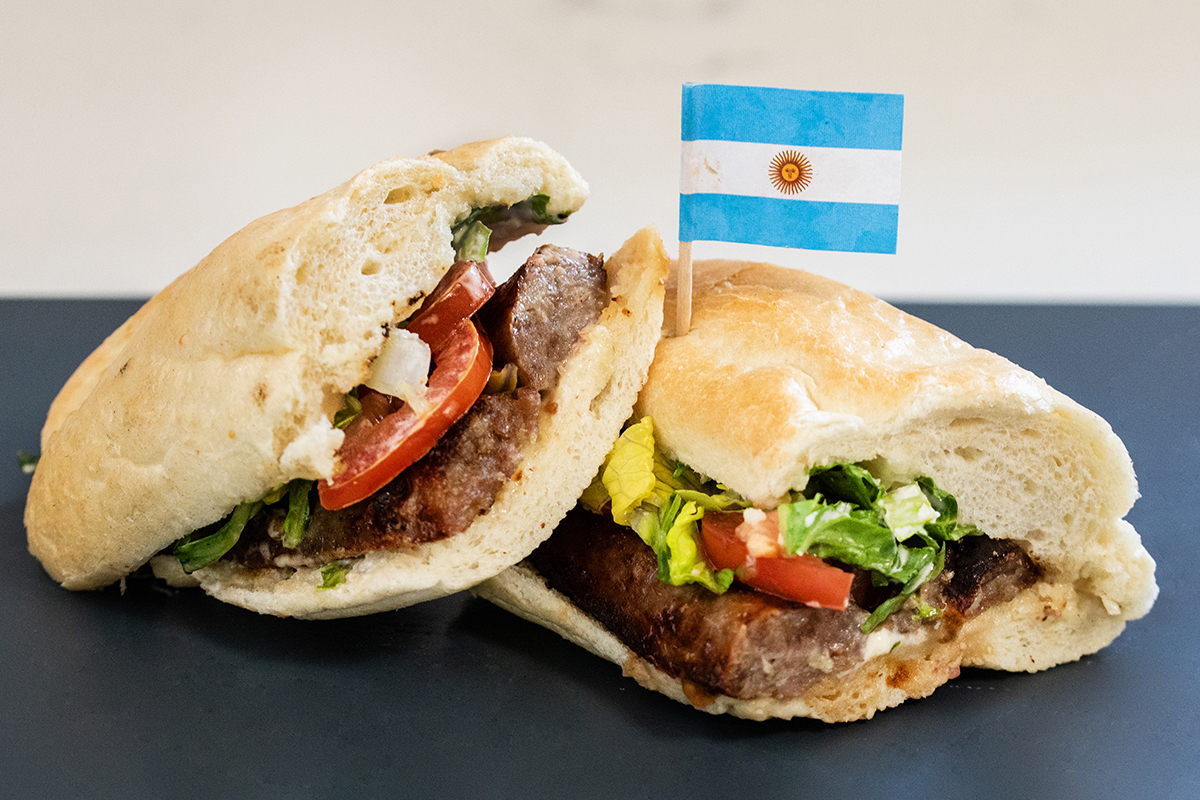Kansas City has more than its fair share of famous foods.
The city is best known for barbecue, of course, but, lately, it’s also gotten attention for having one of the country’s best Mexican food scenes.
But when it comes to Kansas City’s famous foods, there really are four that stand out above all the others: burnt ends, our signature cut of steak, cheesy corn and chicken spiedini.
These four creations are both unique to the city and pretty much ubiquitous. And, in each case, we’ve spent time researching them and talking to the people who make them. Here are the secret stories behind each, including picks for where to get them.
Burnt ends
Arguably the most famous food to ever come from KC used to be free. At Arthur Bryant’s Barbeque in the Jazz District, the trimmings of brisket were traditionally offered for free as sort of amuse-bouche to diners who’d waited in line for pit-smoked meats. They came to fame in 1972, when KC-bred writer Calvin Trillin described them in an essay for Playboy magazine.
“The main course at Bryant’s, as far as I’m concerned, is something that is given away free — the burned edges of the brisket,” he wrote. “The counterman just pushes them over to the side and anyone who wants them helps himself.”
Which presents a problem: Because burnt ends are, by definition, only the end of the brisket, they’re naturally in short supply. So now anyone who goes to Bryant’s and orders burnt ends gets something that is very much not a burnt end—it’s just a chunk of brisket that’s been double-smoked and sauced heavily. Owner Jerry Rauschelbach concedes they’re made “totally incorrectly” but there’s not much he can do. However, if you want old-school Trillin-style burnt ends at Bryant’s, you can get a little taste on the 3-B sandwich (named for the exit on I-70), which are included along with regular sliced brisket based on availability.
Traditionally, Arthur Bryant’s archrival Gate’s BBQ refused to make burnt ends because “we try not to burn the meat,” however they make a mean burnt end sandwich now from the most charred and greasy cuttings they have.
Strip Steak
If you’re at Golden Ox steak house in the West Bottoms, chances are it’s for Kansas City strip steak. The city’s signature cut was first grilled up right here on the ground floor of the Kansas City Live Stock Exchange. The exchange is where ranchers brought their livestock to sell, and the steakhouse catered to them as a place to celebrate the sale with a big night out. The Golden Ox opened on the first floor of the building in the middle of 1949 and survived sixty-five years in its original form even as the stockyard business slowed.
Strip steaks are cut from the larger side of a beef loin, and have a little chew plus a nice thick rim of fat that can be helpful when grilling. A Kansas City strip steak is a lot like a New York strip steak, except the rugged Midwestern version has a bone while the more delicate coastal version has the bone trimmed out. Kansas City is famous for its cut—you’ll see it for sale by name at most butcher shops in the country.
At Golden Ox, a bone-in, dry-aged strip steak is $46. That’s an expensive steak, and for $46 there are others in town e prefer. But you have to eat it at least once, right? It’s a trophy steak, and one of the foods Kansas City is famous for.
If you want the absolute best KC strip steak available, we recommend grilling it yourself. Two local ranches in the Northland, KC Cattle Company and the Upper Cut, have the best steaks we’ve ever tasted.
Cheesy Corn
When it comes to KC barbecue, there are a lot of misconceptions—our sauces aren’t all sweet and thick, and they didn’t start out being sweet at all. The father of Kansas City barbecue, Henry Perry, made sauce that was said to have face-melting heat.
But one thing that many KC barbecue joints do now have in common is a side dish: cheesy corn, sometimes called “cheesy corn bake” or occasionally “corn casserole.” You’ll find very good versions of it on menus everywhere from Slap’s in KCK to Harp in Raytown.
And, unlike other innovations, there’s no argument about where it came from. In 1981, Jack Fiorella opened a downtown Overland Park restaurant called Hatfield & McCoy’s. Jack was the eldest son of Russ Fiorella, owner of the landmark original Smoke Stack BBQ, and had already spinoff of his father’s Stack. Hatfield & McCoy’s was an ambitious project and was intended to be Jack’s signature restaurant.
The breakout star at Hatfield & McCoy’s? The cheesy corn side-dish, developed by Jack Fiorella’s mother as a gift to her son.
Things didn’t work out with Hatfield & McCoy’s and its struggles almost took under Jack’s Stack. But after a lot of hard work—and a popular side dish brought over from its failed sibling—the BBQ restaurant survived. From there, it’s gone on to conquer the city and become a famous food not just in KC, but at barbecue restaurants around the country.

Chicken Spiedini
Spiedini is a traditional Italian food—the word means “spit” and in Italy, it’s a style of beef kebab. But chicken spiedini of the type you’ll find on American Italian menus is very much a Kansas City food, invented by Mike Garozzo in 1989.
In the late 80s, white meat was very much ascendant, with diners eschewing beef for chicken. (Pork tried to get in on the action with “the other white meat” campaign.)
When he planned to open Garozzo’s in Columbus Park, KC’s historic Italian neighborhood, Garozzo asked for assistance from his Uncle Alfio in St. Louis.
“We were eating the Nonna Garozzo beef spiedini, and he said, ‘Mike, you don’t have enough chicken on the menu,’” Garozzo told us. “I said, ‘We have chicken parmesan, chicken marsala—I mean, what are you going to do with it? It’s chicken.’”
Well, he figured out something to do with it—and the rest is history. Garozzo marinates chicken with olive oil, garlic, basil and breadcrumbs for up to six hours then rolls them and skewers them. The spiedini gets another coating of breadcrumbs before being charbroiled and sauced.
Today, you’ll find the dish on most red-sauce Italian restaurants in KC and at one point Olive Garden even tried making its own version. If that doesn’t make this a legit claim to being one of Kansas City’s most famous foods, what would?






